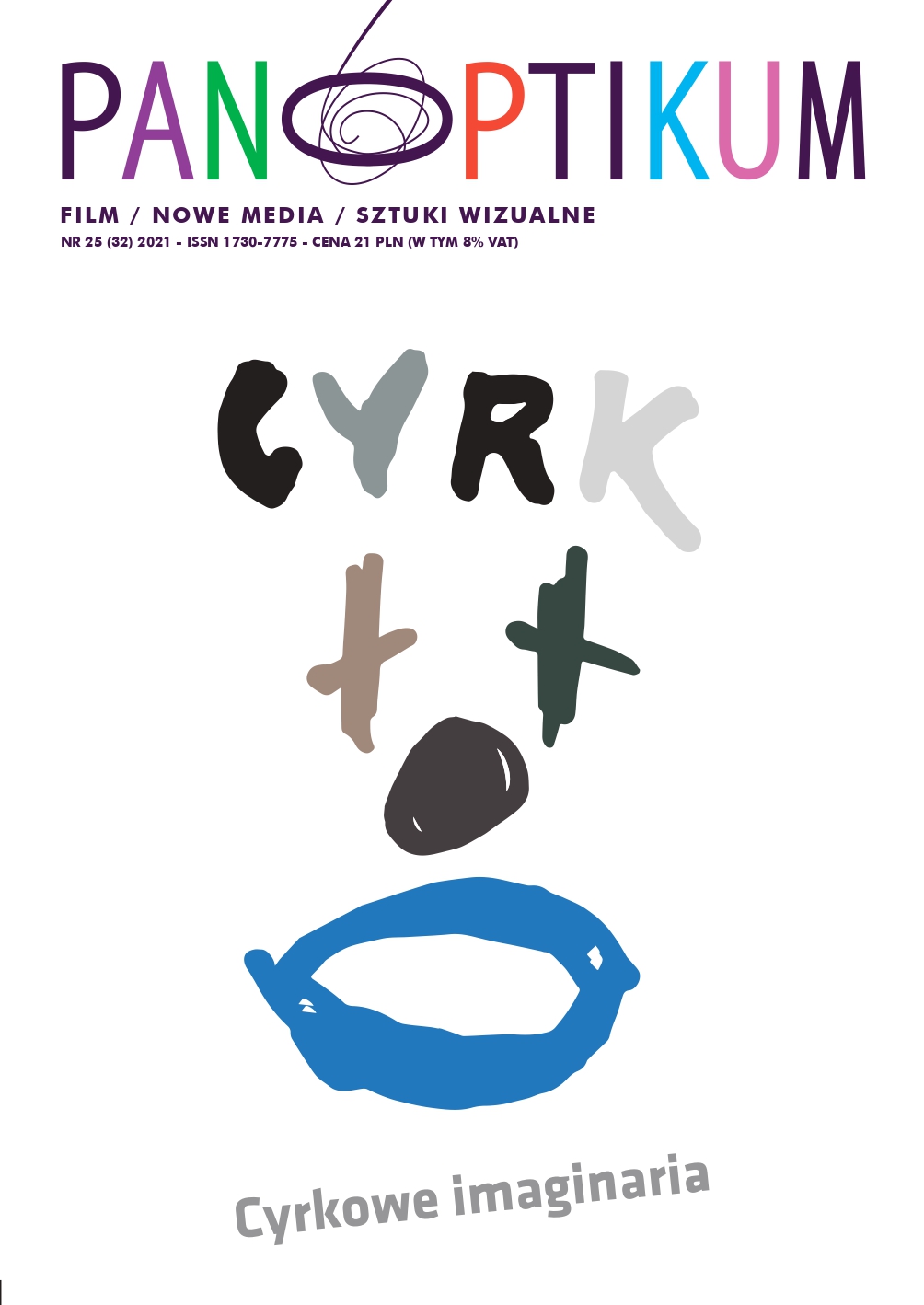Gravity Matters: Circus as a Device. An Approach on Staging the Relationship between Human Beings and Gravity
DOI:
https://doi.org/10.26881/pan.2021.25.03Słowa kluczowe:
circus, device, gravity, corporeality, identity, multidisciplinarity, nouveau cirque, contemporary creationAbstrakt
This article aims at understanding Circus as a creative device in order to provide an alternative approach to the study of contemporary circus creation. To this effect and from a plural, multidisciplinary perspective, the article will be organised in four main parts. Justifying Circus as a device for staging the relationship between the human beings and the force of gravity; specifying why this relationship is indeed at the very core of human beings’ experience and identity matters; contextualising nouveau cirque within the evolution of artistic avant-gardes from post-modern currents to our days; and providing a series of practical examples of these first two points by studying selected works from a series of contemporary artists. Such approach evidences Circus’ aesthetics of risk as a convergence point for researches in corporeality and performativity, while allowing a parallel study on the problematic of gravity as an essential condition for human identity. From both its physical and poetic aspects, this subject evolves radically through the late 20th century to the paradigms of our present, as it is visible in the work of active artists such as Aurélien Bory, Kitsou Dubois, Maria Donata D’Urso, Chloé Moglia, Yoann Bourgeois or Inbal Ben Haim.
Downloads
Bibliografia
Agamben, G. (2006). Che cos’è un dispositivo? Nottetempo.
Albretch, E. (2006). The Contemporary Circus. Art of the Spectacle. The Scarecrow INC.
Andrieu, B., Burel, N. (2014). La comunication directe du corps vivant. Une émersiologie en première personne, “Hermès”, no. 68.
Andrieu, B. (2013). Le corps en première personne: une écologie pré-motrice, “Movement & Sport Sciences – Science et motricité”, no. 81.
Boisseau, R., Gattinoni, C. (2011). Danse et art contemporain. Nouvelles Éditions Scala.
Bory, A. (2017). L’espèce dans l’espace. Actes-Sud Papiers.
Calvino, I. (1988). Lezioni Americane. (Ed. 2016) Oscar Moderni.
D’Andrea, F. (2017). Imago mundi. L’expérience du corps dans le monde, “Corps”, no. 15.
D’Andrea, F., Sirost, O. (2017). Des écologies et des corps, “Corps”, no. 15.
De Ritis, R. (2008). Storia del Circo, dagli acrobati egizi al Cirque du Soleil. Bulzoni Editori.
Didi-Huberman, G. (2016). Ce qui nous soulève, [in:] Soulèvements, Gallimard. Catalogue of the exhibition “Soulèvements”, curated by G. Didi-Huberman.
Fischer-Lichte, E. (2014). Estética de lo performativo. Abada Editores.
Gallese, V. (2017). The Empathic Body in Experimental Aesthetics – Embodied Simulation and Art, [in:] V. Lux, S. Weigel (eds.), Empathy. Epistemic Problems and Cultural-Historical Perspectives of a Cross-Disciplinary Concept. Palgrave.
Godard, H. (1995). Le geste et sa perception, [in:] M. Michel, I. Ginot (edss), La danse au XXème siècle. Bordas.
Goudard, P. (2013). Esthétique du risque: du corps sacrifié au corps abbandoné, [in:] E. Wallon (Ed.), Le cirque au risque de l’art. Actes-sud Papiers.
Jacob, P. (2016). Une histoire de cirque. Seuil/BnF.
Lista, M. (2017). Dance is Hard to See. Introduction. A Different Way to Move, [in:] A Different Way to Move. Minimalismes, New York 1960–1980, catalogue of the exhibition curated by M. Lista. Berlin, Hatje Cants.
Louppe, L. (1997). Poétique de la danse contemporaine. Contredanse.
Mondzain, M.J. (2016). À ceux qui sont sur la mer, [in:] Soulèvements, Gallimard. Catalogue of the exhibition Soulèvements, curated by G. Didi-Huberman.
Morin, E. (1990). Introduction à la pensée complexe. (Ed. 2005) Seuil.
Peignist, M. (2009). Histoire anthropologique des danses acrobatiques, “Le corps dansant”, no. 7.
Pontremoli, A., Venura, G. (2019). La danza: Organizzare per creare. Scenari, specificità tecniche, pratiche, quadro normativo, pubblico. Franco Angeli.
Topin, N. (2001). L’analyse du mouvement, une danse du regard: l’enseignement d’Hubert Godard. “Nouvelles de danse”, 46–47; “Incorporer”, 100–113.
Von Kleist (1810). Sul teatro di marionette. (Ed. 1996) La Vita Felice.
Wallon, E. (2013). Introduction. La gravité plus la grâce [in :] E. Wallon (Ed.), Le cirque au risque de l’art. Actes-Sud Papiers.

 Uniwersyteckie Czasopisma Naukowe
Uniwersyteckie Czasopisma Naukowe









